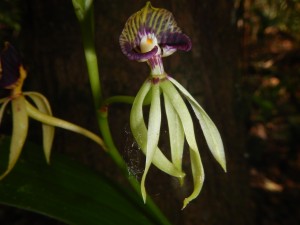Hello everyone! This was an interesting day schedule wise. Though we were originally supposed to leave Las Cuevas at 7 am and head to the ATM cave, our van did not show up until around 11 am. Unfortunately, this meant that we would have to skip the cave tour, but we did get to hear a really neat talk by one of the workers at Las Cuevas and spend a little extra time being at one with the rainforest.

Once the van finally arrived, we ended up heading to a souvenir shop, small café, and supermarket to pass some time before traveling to the Tropical Education Center where we’re staying for the night. After a quick dinner, we got to go on a Night Tour of the Belize Zoo (!!!!) where we saw and interacted with some amazing animals. We got to touch a black jaguar’s paw, watch a spotted jaguar do somersaults and climb a platform, see ocelots, margays, a puma, and feed carrots to a tapir (the national animal of Belize) among other things.

While we were roaming the zoo near the margay cage, I did spy a beetle that had landed on one of my classmates. It was a couple of centimeters long and brown, but other than that I did not get too close of a look at it because it quickly flew away so I am not sure what it was (probably a darkling beetle of some sort). Despite all of the travel adjustments that had to be made today, I would still call today a great day because of the wonderful zoo tour. After all, when else am I going to be able to touch a black jaguar’s paw and feed carrots to a tapir? 🙂









